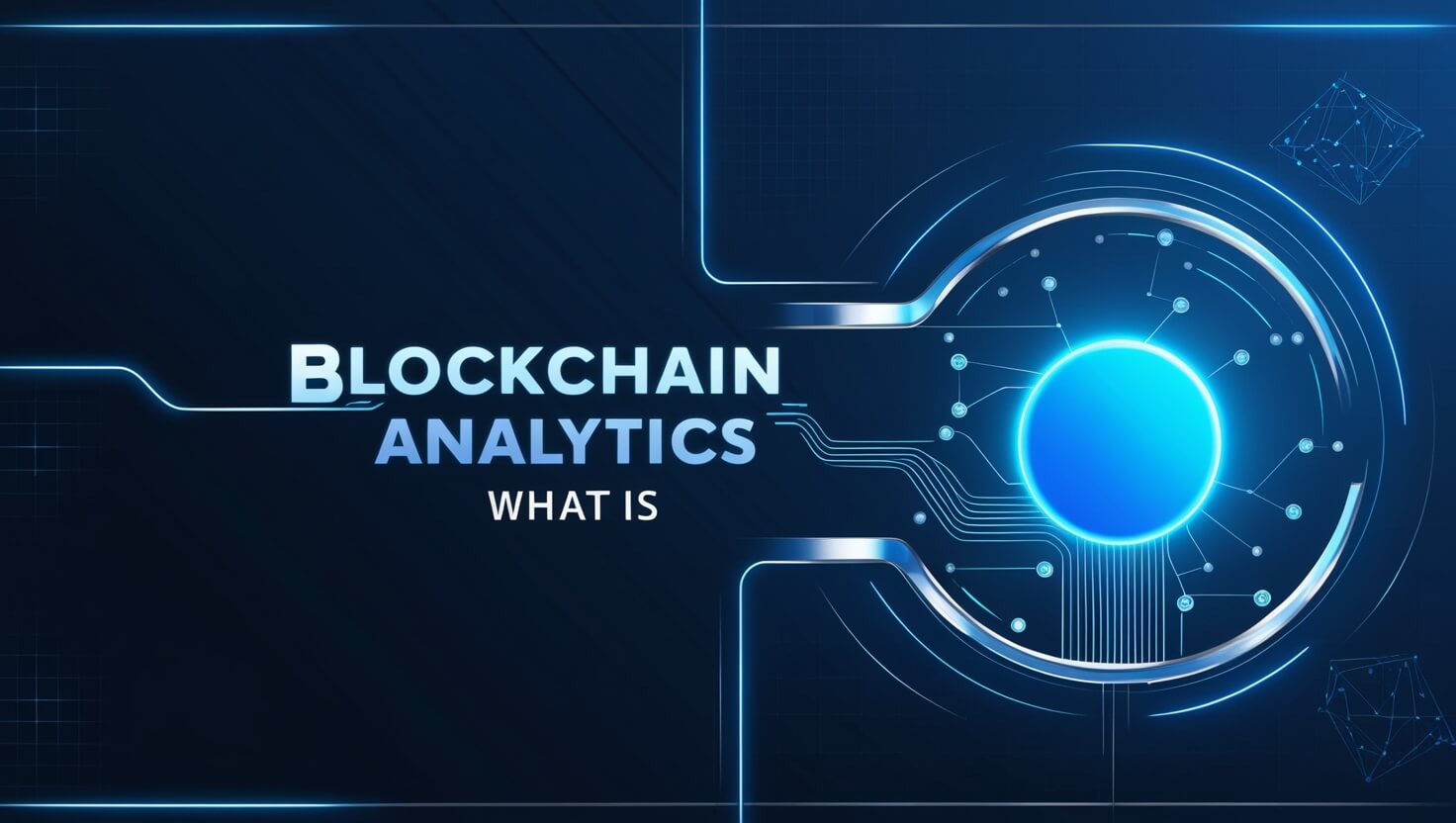In this article, I will discuss What is Blockchain Analytics.
To gain understanding about transaction flows, participant actions, and network activity, analytics perform analysis and interpretation of the data stored on the blockchain, which is termed as blockchain analytics.
Analytics, for instance, improve the security, transparency, and efficiency in the management and comprehension of blockchain networks through application of advanced tools and techniques.
What is Blockchain ?
Blockchain is an immutable record of transactions that utilizes a digital ledger that is distributed and decentralized.
Every transaction made is collected in a group referred to as a “block,” and this block is linked through a cryptographic process to the preceding one to form a chain.

The blockchain technology eliminates the need for intermediaries which increases the technological transparency, efficiency, and security of the systems.
Although it was initially created for cryptocurrencies like Bitcoin, its use has now spread across multiple sectors such as finance, healthcare, and supply chain management.
What is Blockchain Analytics

Blockchain analytics refers to the process of evaluating data within a blockchain for purposes such as transaction activity, participant engagement, and network health.
Using specific software, blockchain analytics can uncover fraudulent activities, verify compliance, and improve overall security. It entails scrutinizing transaction data, spotting patterns, and generating decision making information for many businesses and regulators.
The phenomenon of blockchain analytics is vital for comprehending blockchain networks’ intricacies, and as such, it is highly adopted in finance, supply chain, and cybersecurity industries for better transparency, trust, and enhanced performance.
How Blockchain Analytics Works
Data Collection
The user can obtain information directly from the blockchain which includes transaction records, blocks, and even smart contract activities.
Data Parsing
The raw data retrieved from the blockchain is then refined and organized as per relevance so that analysis can be performed on it.
Pattern Recognition
The user then attempts to recognize patterns in the data such as volume of transactions, activity on the network, and even the behavior of different users.
Anomaly Detection
Any suspiciously large transactions and attempts at double spending can be detected to find any odd activities.
Visualization
The data that has already been refined and analyzed can now be presented in a more user friendly manner using graphs, flow charts, and dashboards.
Reporting and Insights
After the data has been analyzed, reports can be generated with reasoning behind decision making.
Compliance and Monitoring
Monitoring accounts and transactions can ensure compliance with various regulations. Any transactions that seem like they are violating laws can be marked for further scrutiny.
Benefits of Blockchain Analytics
Blockchain analytics brings about a myriad of advantages that boost security, transparency, and efficiency:
Stage Disguised Attempts: The combination of fraud prevention alongside blockchain monitoring increases the security of the network. Analytics tools secures the integrity of the network by restricting and barring fraudulent attempts.
Regained Trust Opacity: Users trust that analytics will provide an accurate and traceable history of all transactions that documents everything, enables them to build trust in executed transactions.
Regulated Non-Compliance Gets Efficient: Foremost, analytics tools guarantee that all regulatory requirements such as compliance are passed or adhered and also suspicious attempts out flagged whilst covering reports for auditing.
Uninformed Behavioral Patterns: Stake holders plus businesses find it easier to make decisions due to the aids provided by the insights of the transaction patterns and user behaviors.
Insight Reveling From Underlying Data: The network’s integrity is preserved when tactics fraud attempts are quashed, by flagging and isolating unknown patterns analytics tools endorse.
Highly Relatable With Data: The level of operational efficiency can be measure through amendment of blockchain analytics for data analysis and increase in reduced manual workloads.
Decreased Bestowment Performance Accuracy Levels Heightened: Enhancing strategies becomes easier for organizations due to the assistance of accurate, detailed data.
The Future of Blockchain Analytics

The prospect of blockchain analytics seems brith with prospects owing to the increased efforts directed towards improving security, transparency, and efficiency.
As new advancements come, we expect more broader acceptance in diverse fields like finance, healthcare, and even government services. Merging Aritificial Intelligence and Machine Learning with blockchain analytics will also drive new innovations with greater insights and predicative accuracy.
Furthermore, supportive legislation together with cooperative efforts from the public and private sectors will continue to propel the use of blockchang analytics and solidify it’s position as the center of digital information security and data management in the future.
Key Features of Blockchain Analytics
Distributed Storage
On a blockchain, data is spread across various nodes which make it much safer from collapse as no single node can overarchingly control the network.
Unalterable Documents
Once entered on the chain, data cannot be erased or altered in any form. This makes sure that the information remains untainted.
Enhanced Interpretation Tools
Blockchain analysis tools have the best in metrics interpretation with graphs and charts assisting users in analyzing difficult to understand data.
Trend and Pattern Algorithms
With the advanced tools the modern developed techniques are able to analyze transaction activities and graph uprising trends along with other significant information that needs the entire network’s focus.
Suspicious Activity Notifications
Any suspicious activity on the blockchain is instantly flagged such as abnormal transactions or attempts on double spending.
Smart Contracts Application
Ease of using smart contracts gives the bonus of conducting computational processes of verification and analysis with ease.
Monitoring & Surveillance
Having the ability that ensures that irregular activities or security issues are flagged continuously as opposed to periodically as has been the norm.
Regulation & Violation Reporters
Automated report generation to confirm as well as flag non-compliance with regulatory requirements is possible through advanced tools.
Scalability
The blockchain analytics solutions are meant to scale in accordance with the size of the data. This is beneficial for huge blockchain networks.
Interoperability
Participation in diverse blockchain platforms and applications enables comprehensive data analysis across multiple systems, assuring constant and dependable information.
Conclusion
To sum up, blockchain analytics serves as a potent instrument which incorporates sophisticated procedures to search, process, and analyze information in a blockchain system.
It assists in the prevention of fraud, regulatory compliance, and decision-making through its enhanced security, transparency, and efficiency.
With further developments of the technology, its use will cut across different sectors, which will make it a core component of data management and cybersecurity.










